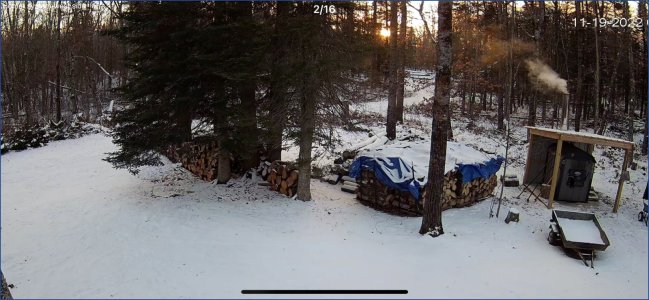yoderjac
5 year old buck +
Jack, a while back on here you were talking about your cameras that send pics to a computer. What system do you use?
I want to maybe lool at doing something like this. I dont want a cell cam for a couple reasons, biggest being im cheap and dont want to pay another cell plan. Also dont want all those pics sent to me constantly.
I'm still using very old technology, BuckeyeCam Orion series. Very expensive up front, but when I amortize the cost over how many years they have been running they are less expensive (and a lot less hassle) than replacing cheaper cams. The electronics are coated. I have one of their X80s with a base that I got when they first came out for testing. It too has been running 24/7/365 flawlessly and is higher resolution. It is smaller and a 12-volt system rather than 6-volt like the Orion. I like these features, but the radio does not transmit as far.
I will caution you that 900mhz can be challenging. If you have LOS, it is great. You can't transmit through terrain. Vegetation attenuates the signal. Pines are worse than hardwoods in most cases. My pine farm is a real tough environment and I benefit from the longer distance radios. There are ways to get around the problem. These cameras have a relay function so you can forward pictures through cameras that are closer to the base.
Cuddeback 900mhz system uses a topology where the network figures out the "best" path the the base and the user has no control. This makes no sense to me. Perhaps they can get away with it because they only transmit highly decimated thumbnail pics. Transmitting pictures takes a lot more energy than operating other features of the camera. This is especially true when signal levels are low. Packet loss requires retransmission of packets. The problem with a self-healing network is that they only take into account signal level and ignore battery power.
With the Buckeye system (that transmits full resolution pictures), the user defines the routing from the terminal camera to the base. This allows you to make sure your routing cameras have sufficient solar charging that battery power is not an issue. Terminal cameras can have smaller solar panels that are balanced with the programming load.
I have work experience with 900 mhz transmission, so setup was not a big deal for me. The buckeyecam system requires some understanding of transmitting in this band to get the right camera/antenna/solar combination for each setup.
Oh, yes, by the way. The system I'm using does have cellular options. Rather than using a base connected to your PC on site, you can use a cell base on site and transmit pictures to it. The cell base takes pictures from all cameras in the network and sends them over the cell system. This mean a single account covers all the cameras in your network.
The other option is to connect your PC base to the internet. The system lets you email the pictures as soon as they arrive at the base or upload them to a server.
I don't need near-realtime information for anything, so the PC at my camp is not connected to the internet.
I also have a few cameras at my retirement property. I'm not trying to do QDM on this tiny property. I use them just to see what is out there. The PC and base for this is in the living space I put in the barn. I have high speed fiber internet there. Rather than having pictures emailed back to me from that computer, I use general remote control software to access that computer from my current home 80 miles away. I can look at pictures and change setting and check camera status all from home.
Thanks,
Jack

